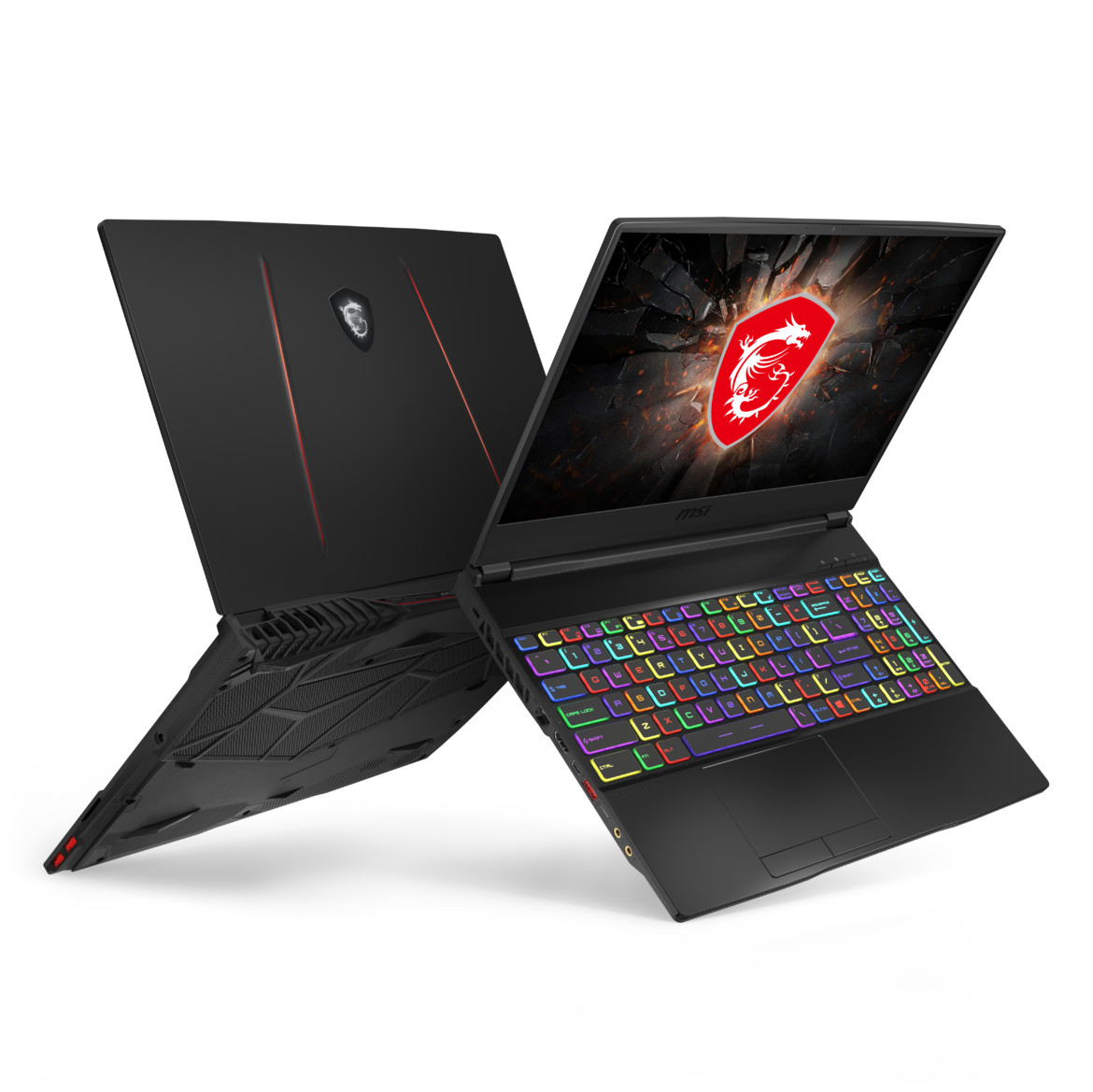TL;DR
The MSI GE65 Raider 9SF is a powerful gaming laptop with a sleek design and a high-refresh-rate display. It packs an Intel Core i7 processor and an NVIDIA GeForce RTX 2070, delivering excellent performance in most modern games at Full HD resolution. While it handles demanding titles smoothly, pushing to 4K or enabling ray tracing significantly impacts frame rates. The laptop also offers good connectivity and is suitable for productivity tasks, but expect noticeable fan noise under load. If you're looking for a top-tier portable gaming experience that balances power with a refined aesthetic, this laptop is a strong contender. Dive into the full review to see if it’s the right fit for your gaming needs!
Gaming has not traditionally been a primary focus for portable computers, or laptops. Historically, these devices have served as work tools and have often been limited in gaming performance. However, MSI (Micro Star International) aims to redefine this perception with its series of gaming-focused laptops. The MSI GE65 Raider 9SF stands as one of the company’s top-tier models, boasting impressive specifications and a price point to match. Our rigorous testing seeks to determine if this laptop currently represents the pinnacle of portable gaming performance.
MSI GE65 – The Look
For a gaming-centric laptop, the MSI GE65 presents a surprisingly clean aesthetic. Many gaming laptops are characterized by thick chassis, aggressive designs, and overly prominent fan vents. While RGB lighting is prevalent in the gaming PC space, and the keyboard features a rainbow-colored default lighting scheme, the two brightly red-lit USB 3.1 (gen 1) ports offer practical convenience for connecting peripherals in dimly lit environments. Aesthetics are subjective, but the built-in SteelEngine software allows users to easily customize or disable the lighting effects. As the name suggests, Danish SteelSeries designed the keyboard and associated mouse (pad) integration, known for their quality.
The speakers, engineered by Dynaudio and featuring multiple drivers and a subwoofer, offer acceptable sound quality but may not be exceptional. However, dedicated gamers often prefer headphones or external speaker systems for a more immersive audio experience.
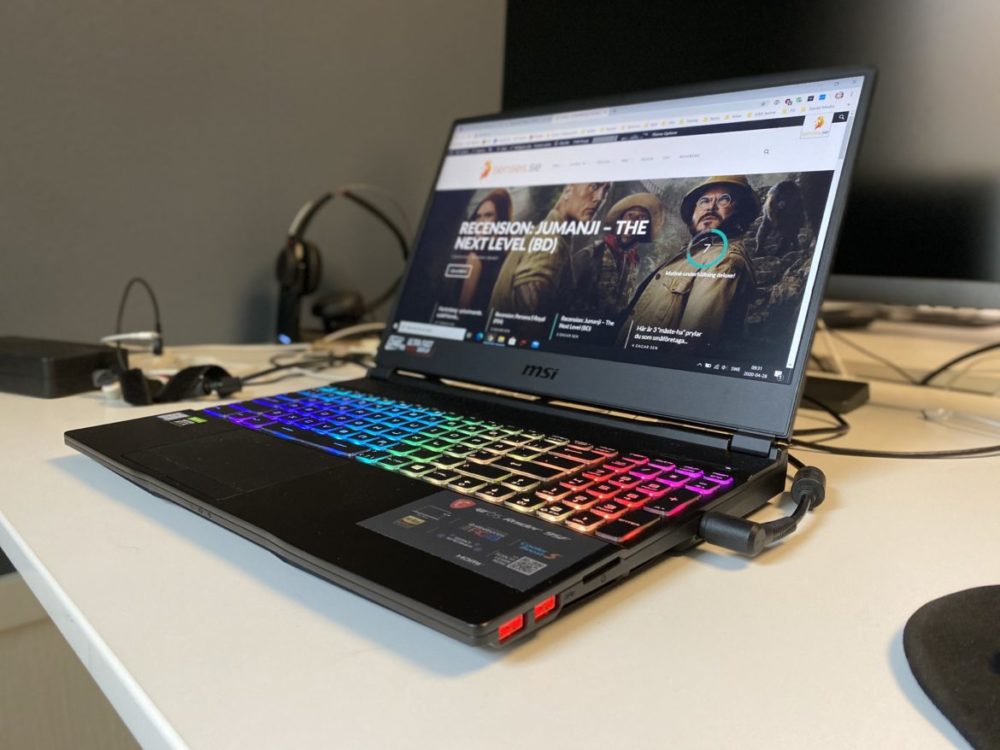
In addition to standard USB ports, the laptop includes a comprehensive array of connectivity options, featuring a USB 3.2 gen 2 USB-C port (single port), an SD memory card reader, a Mini DisplayPort, headphone and microphone jacks, an HDMI port, and an ethernet port, which is often preferred by gamers for its stable connection. The Wi-Fi card is provided by Killer, supporting Wi-Fi 6.
MSI GE65 Raider 9SF – under the hood
Portability is a defining trend in contemporary computing. While desktop computers offer greater performance per dollar, the portable segment is rapidly growing. Desktops are now primarily favored by enthusiast gamers and early adopters who custom-build their PCs. Most consumers now prioritize portability, driven by convenience and space-saving considerations. Performance in gaming laptops is becoming increasingly compelling, making them an attractive proposition for gamers seeking a balance of power and mobility.
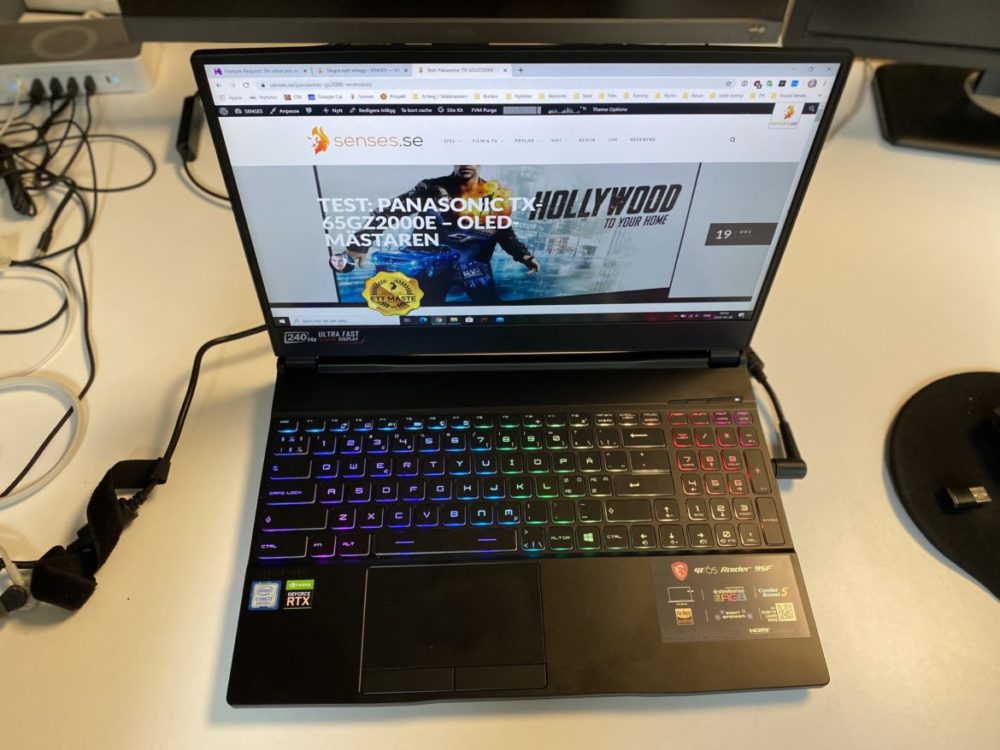
Gaming laptops typically weigh more (and require enhanced cooling) due to their dedicated gaming components. Expect to carry around 3-4 kg, including the laptop itself (approximately 2.5 kg) and the power adapter, which is essential for optimal performance and to prevent battery depletion. For users who prioritize portability and do not require gaming capabilities, ultrabooks offer significantly lighter designs but sacrifice the graphical horsepower needed for modern gaming.
Our MSI GE65 laptop was configured with an Intel Core i7-9750H processor (configurable up to an Intel i9-9880H). This CPU features six cores and 12 threads, based on the Coffee Lake architecture, with a base frequency of 2.59 GHz and a turbo boost frequency of up to 4.49 GHz.
The graphics card in this model is an NVIDIA GeForce RTX 2070 (desktop configuration) with 8GB of RAM, positioning it just below the flagship 2080. The system is equipped with 16 GB of DDR4 SDRAM from Samsung, operating at 1330 MHz (two 8GB modules), and storage consists of a 500 GB Toshiba SSD (NVMe) for the operating system and frequently accessed applications, alongside a 1TB Seagate HDD (7200 RPM) for general storage.
The display is a Full HD-IPS panel (1920×1080) with a thin bezel design and a 240 Hz refresh rate. It provides sharp visuals, accurate color reproduction, and smooth performance in demanding games. While a slightly higher maximum brightness would be desirable, it is not a significant limitation.
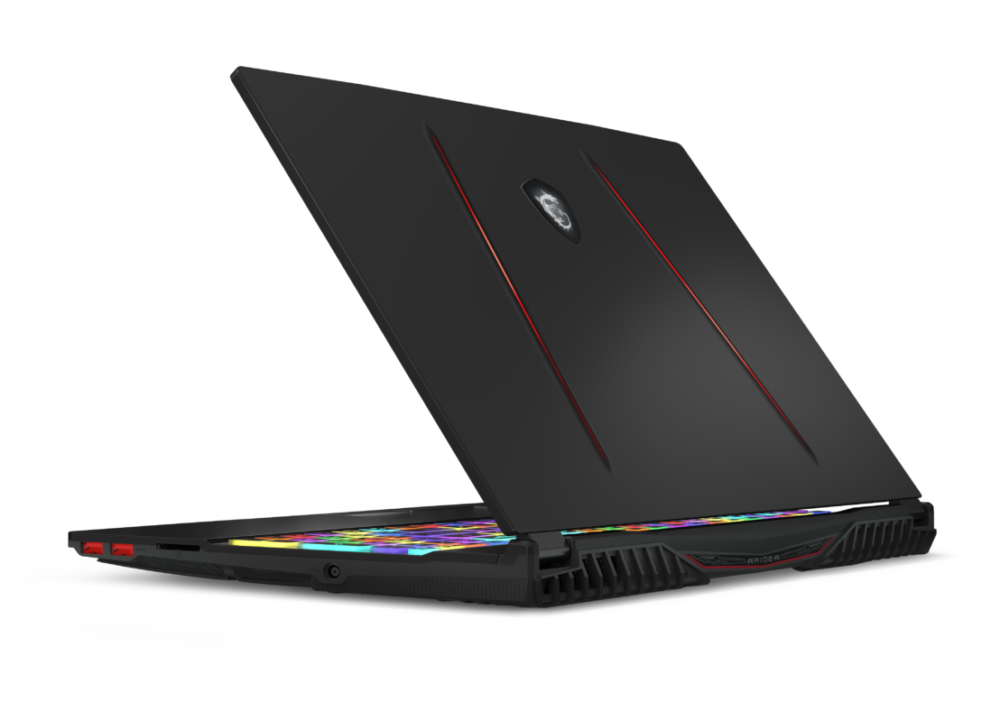
MSI GE65 – benchmark results
Geekbench 5 CPU scores: 1 180 single core and 5 650 multi-core.
Graphics (OpenGL) score: 84 451.

These scores are very competitive, as expected given the dedicated graphics card. By comparison, a modern Dell laptop with integrated Intel Iris graphics achieves approximately 4,600 points in graphics benchmarks. While integrated graphics solutions are not designed to compete with dedicated gaming cards like the Nvidia GeForce, this represents a substantial performance difference.

Cinebench R20 yielded a score of 2 485 points, which is indicative of the performance ceiling for this generation of CPU. Higher scores are typically achieved with AMD Ryzen or Intel Xeon processors, which are found in stationary PCs with different pricing considerations. This performance is commendable for a portable device.
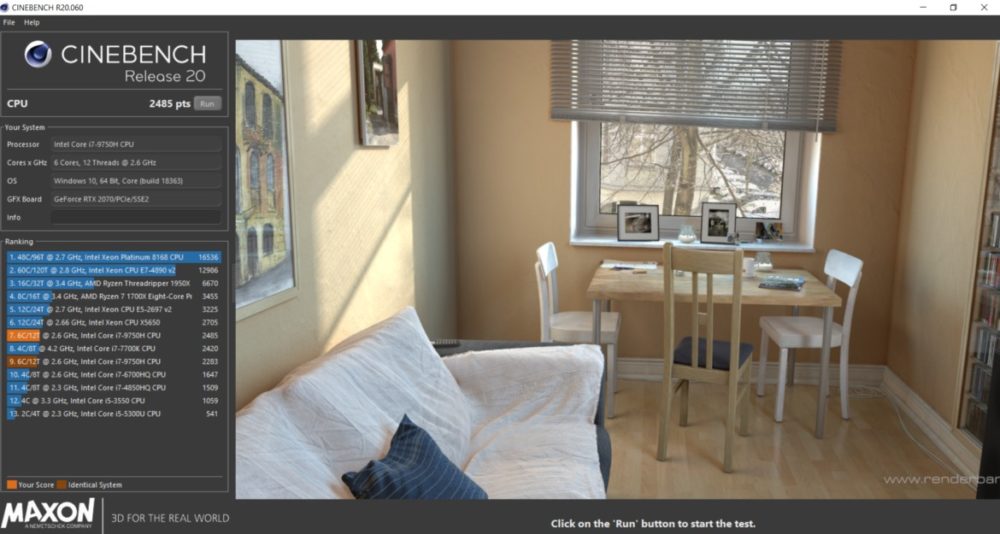
3DMark (Time Spy) scores: 7 521 (GPU) and 5 810 (CPU). These results align with expectations for this hardware configuration. For comparison, a newer GeForce 2080 can reach 12 402, and an AMD Ryzen processor can achieve 8 300, though these scores are typically obtained on desktop systems. The GE65 Raider’s total score of 7 228 points surpasses 63% of gaming laptops in online benchmark databases, where the average score is approximately 5 730 points.
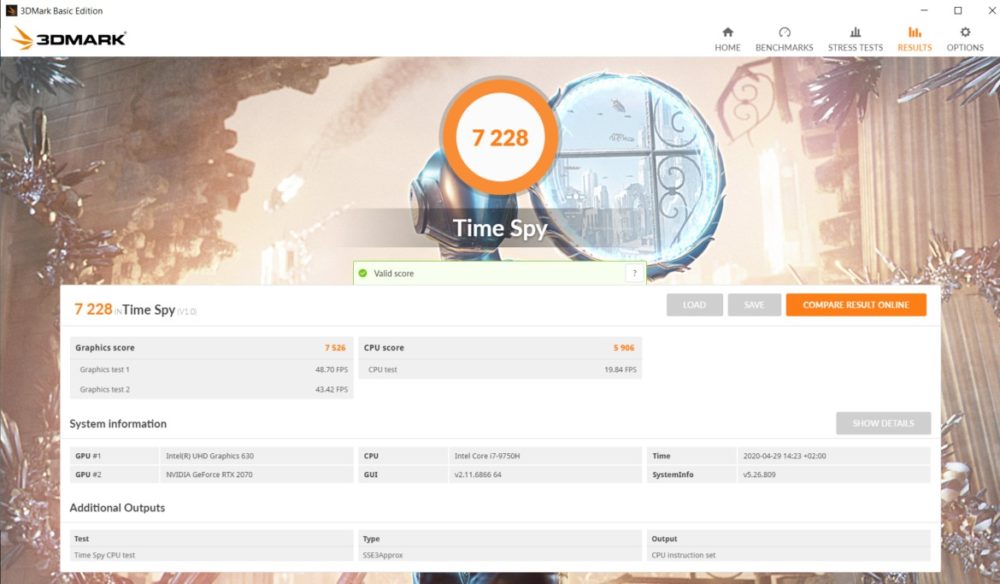
Benchmark results should be interpreted as indicators of relative performance. Significant performance gains on paper may not always translate to equally noticeable improvements in real-world usage.
The games on MSI 65 – how good do they get
While synthetic benchmarks provide valuable data, the ultimate test is real-world gaming performance. How well does this laptop handle games in practice? (For optimal performance, the laptop was tested while plugged in and set to “maximum performance.” Battery life and portable performance may vary.).
Witcher 3, a popular and graphically demanding title, continues to stress modern hardware with its intricate hair physics, high-resolution textures, and detailed environments.

With all settings maximized, the game delivers an impressive experience on the laptop’s built-in Full HD (1920×1080) screen, maintaining frame rates above 100 fps in unlocked mode (locking to a stable 60 fps is easily achievable). However, Full HD resolution is becoming less common, as many console games target 1440p-2160p. When connected to a 4K display (3840×2160) with the same maximum settings, the frame rate dropped to approximately 30 fps, which is borderline unplayable. The visual fidelity of 4K comes at a significant performance cost.
The following video showcases expected performance (adjust the video settings for optimal resolution and frame rate):
Forza Horizon 4, a visually stunning and resource-intensive racing game accessible through Xbox Game Pass for PC, offers a comprehensive suite of graphical settings to fine-tune performance. While impressive on the Xbox One X, the PC version offers even greater visual fidelity, provided the system meets the minimum requirements of 12GB of RAM (many laptops still feature 8GB) and a GTX 970 graphics card. The game runs smoothly on the built-in screen, maintaining nearly 60 fps with Ultra settings. While some compromises, such as FXAA (anti-aliasing), may be necessary, the overall presentation rivals that of the Xbox One X. (The game also includes settings for frame rates of 80, 120, and 240 fps, anticipating future hardware advancements.)

Remedy’s Control, while divisive among players, is undeniably a graphical showcase, featuring support for RTX ray tracing. Ray tracing enhances visual fidelity and realism, but significantly impacts performance. Disabling ray tracing and using high (but not maximum) settings allows the game to maintain a stable 60 fps, providing an enjoyable experience with a SteelSeries Stratus Duo controller.
Capturing side-by-side images demonstrating the impact of RTX was challenging, so we recommend Digital Foundry’s detailed analysis:
In summary, the MSI GE65 delivers exceptional performance in most modern games when using the built-in screen. However, achieving 4K resolution requires compromising on graphical settings to maintain playable frame rates, as expected.
Fan noise is present, and increases under heavy load as the cooling system manages thermals. Expect the fans to be active during gaming or other demanding tasks (quieter during general use). We measured approximately 60 dB at a typical sitting distance, which is noticeable but manageable. Adjusting fan speed profiles within software may be possible, as maximum fan speed may not always be necessary. The use of high-quality headphones is recommended in any case.
The GeForce RTX series is designed to accelerate real-time ray tracing, a technology poised to become more prevalent in upcoming titles such as Halo Infinite and CD Projekt RED’s Cyberpunk 2077. These games will showcase the full potential of the card. Ray tracing is computationally intensive, impacting both frame rate and resolution, as observed in Control.
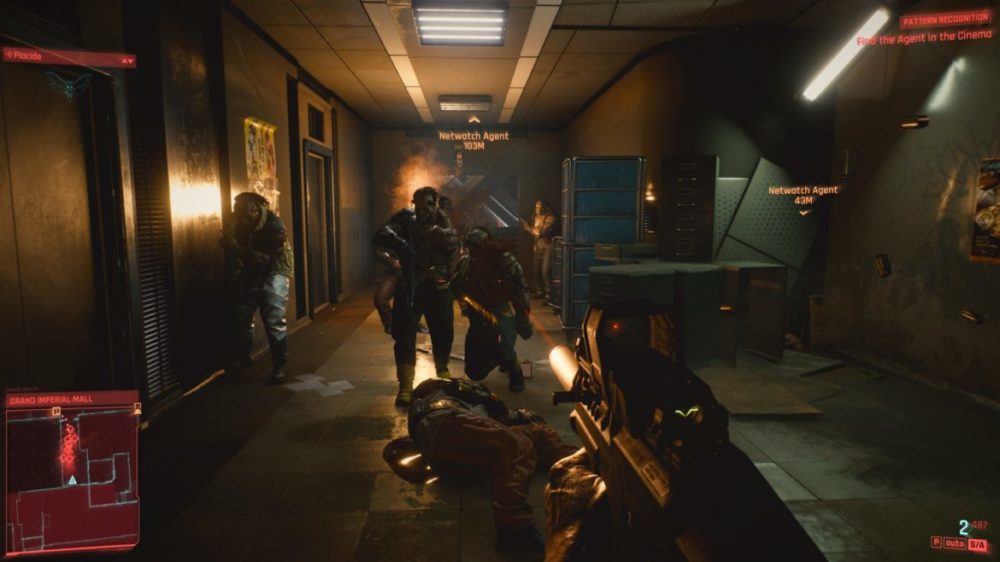
Working with MSI GE65
Despite its gaming focus, the MSI GE65 Raider 9SF is suitable for general productivity tasks. The fast SSD and comfortable screen facilitate extended use. The 15.6″ display is well-suited for users who require a larger screen, and Windows 10 offers broad software compatibility.
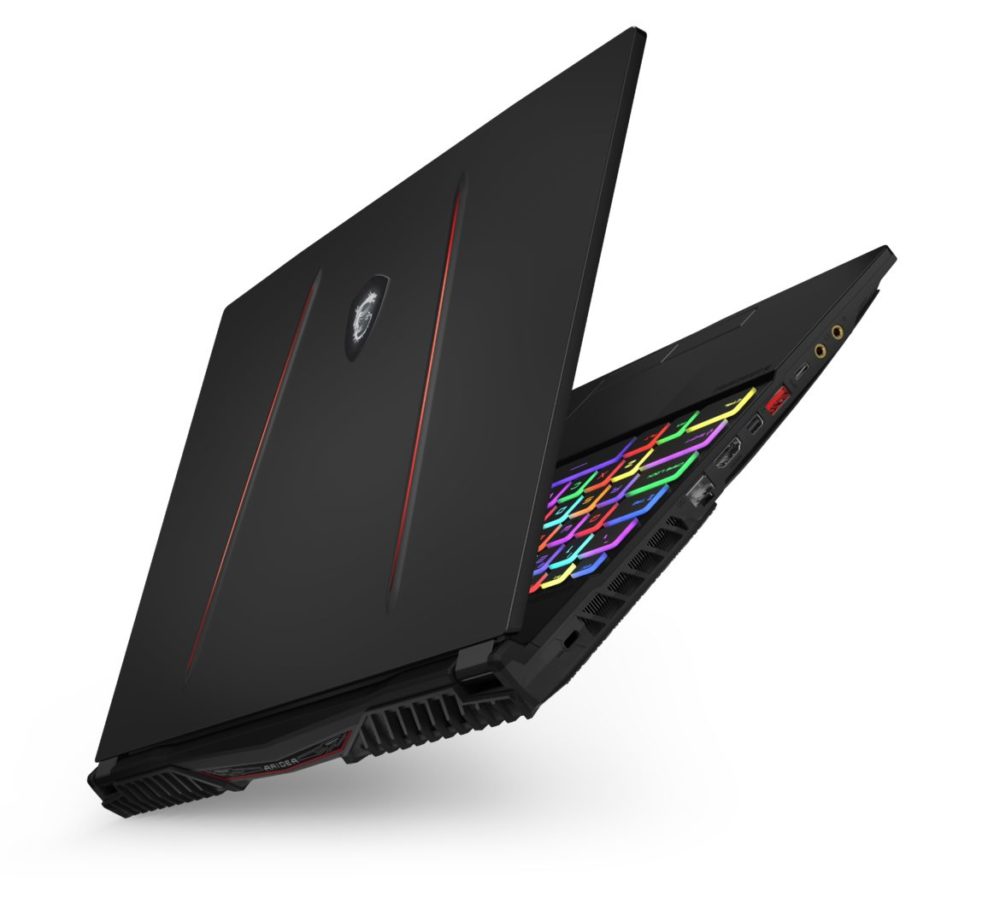
Our in-house video editing workflow involves rendering raw footage to x265 using NVEnc acceleration. The NVIDIA GeForce RTX 2070 achieved 130 fps, compared to 200+ fps with the Quadro P3200 card in the MSI WS65. For intensive video rendering, dedicated workstation cards offer superior performance, although at a significantly higher cost.
The price for gaming performance?
The MSI GE65 is a capable all-around laptop optimized for gaming, but also suitable for productivity and media consumption. The price of this Intel i7-equipped model is in the premium segment, but offers significant value. The display does not feature HDR or 4K capabilities, and the performance necessitates a slightly larger and heavier form factor. The NVIDIA GeForce RTX 2070 series is a capable graphics card, but is starting to show its age, especially when ray tracing is enabled. The upcoming MSI GE66 (featuring 10th-generation Intel processors, but still using the GeForce RTX 2070) is also on the horizon. Achieving 4K, HDR, 60 fps, and ray tracing simultaneously on a laptop requires a substantial investment, and may not be feasible even with the latest hardware. Future testing will explore these limits.
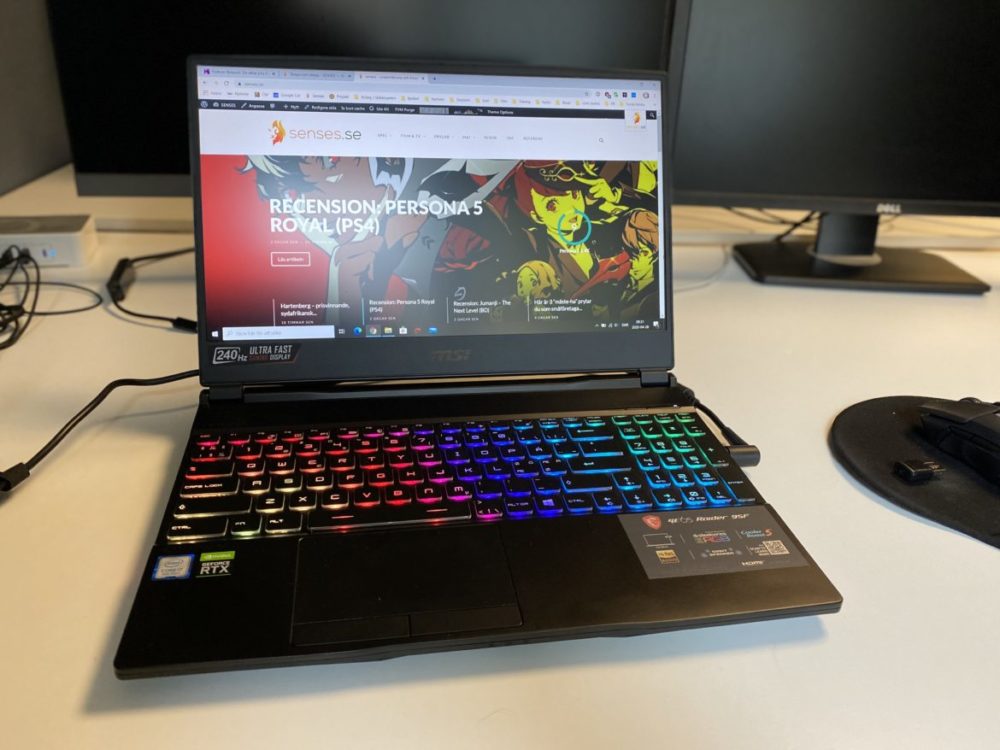
Overall, the MSI GE65 Raider is the best portable gaming laptop tested to date, setting a new standard for portable PC gaming. It is highly recommended for users seeking a powerful, portable, and stylish gaming solution.
The future of portable gaming is promising.
